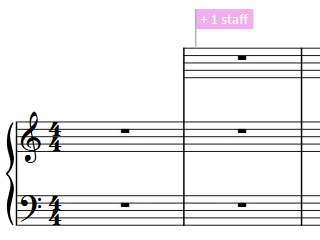
As words transform with time in any society, country or economy we should look for the “key words” of Interiors: we will freeze-frame certain ideas, by clarifying and asserting them – always remembering they belong in an open panorama of thought. Words represent things and things can be an instrument to create new stories and ideas.
#Hide empty staves dorico free
In a steady process of self-reinvention, words are never definitive and fixed, on the contrary free and open to change. While going around, words spread ideas and stimulate images. We also wish to understand, discuss, and compare everyone’s notes without any need of traditional classification.

Words denominate things, words tell stories, word open to other worlds and to different ways of thinking. This publication wants to outline, in one single narrations made of various contributions, the complex scenery of contemporary Interiors by means of words that best characterize them. On the contrary, this thesis shows how such a practice can be an instance of a positive and constitutive political force-in other words, able to produce the common. Moreover, this genealogy shows that by embracing “collective intelligence” and “projective” practice architecture does not necessarily surrender to constituted political powers and to the forces of the market. Renaissance sprezzatura, the monster in Enlightened France, Alois Riegl's Kunstwollen, Aldo Rossi's collective memory and the 1970s debate on architectural language are taken as indexes of a Western tradition of collective intelligence in design.

This thesis aims to overcome such a distinction, showing that, on the contrary, a diffused, collective intelligence was at the core of architectural production since its invention in the 15th century.

Today we are familiar with definitions of architecture as an integrated, multidisciplinary “networked practice,” which takes its cognitive potential from a “diffused design intelligence.” These definitions were introduced to counter an individual, authorial approach to design which allegedly characterized modern architecture since its beginnings.


 0 kommentar(er)
0 kommentar(er)
